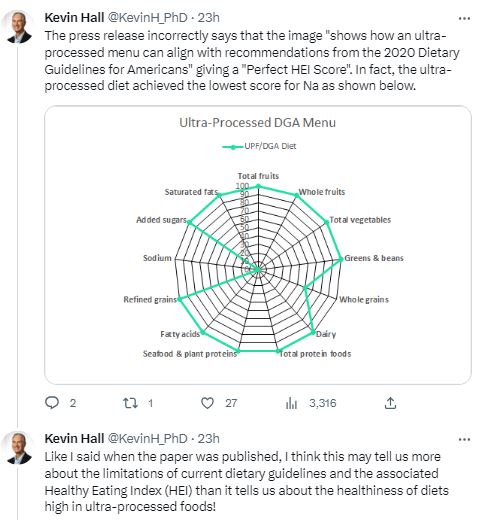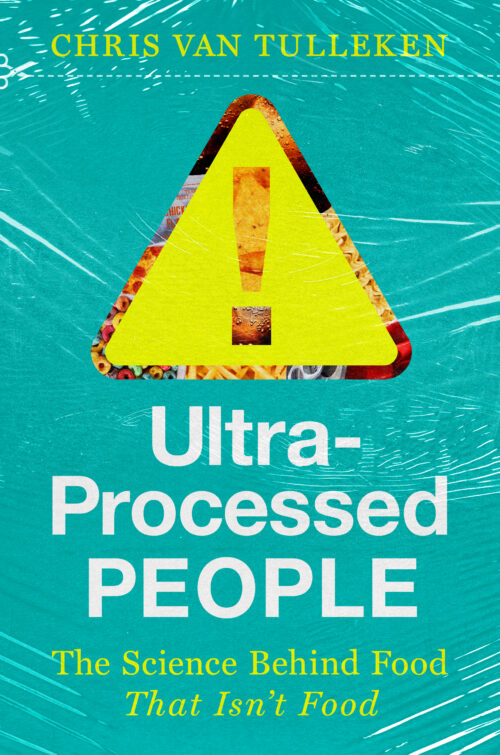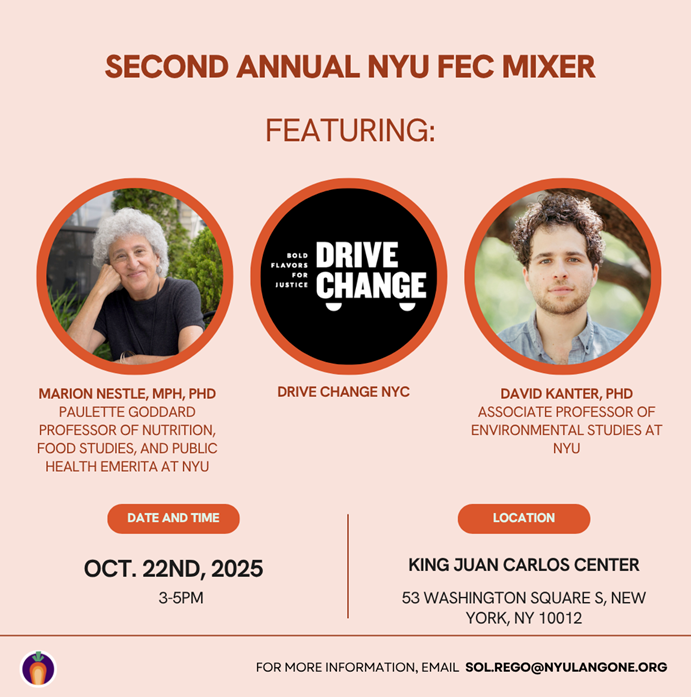Ultra-processed pushback #3: Nordic Nutrition Researchers reply
Last week, I posted information and links to documents sent to me anonymously suggesting that the new Nordic Nutrition Recommendations (NNR) had been influenced by the food industry to omit a statement in an earlier draft to reduce consumption of ultra-processed foods.
I have no first hand personal experience with these recommendations and do not want to get in the middle of a dispute over the development of these guidelines.
I do feel strongly that the concept of ultra-processed is an enormous step forward in understanding how to eat more healthfully, backed up as it is by hundreds of observational studies and one extraordinarily well controlled clinical trial (Kevin Hall’s at NIH). I think enough evidence exists, and the concept is well enough defined, to advise the public to eat less of highly processed food products.
Shortly after my post went online, I received the following letter from Norwegian researchers involved in the NNR process asking me to correct and clarify what I had posted. I reproduce the letter here with their permission, and with thanks for our correspondence over this issue. Read what they say and last week’s post, and decide for yourself.
July 12th 2023
Dear Marion Nestle,
This email is from the Norwegian researchers involved with the recently published Nordic Nutrition Recommendations (NNR2023), including the head of the working group.
We have read your books, followed your daily blogposts for years, and always appreciated your informative and thoughtful letters. However, your post Monday 10th July on NNR2023 and the chapter on ultra-processed foods (UPF) is misinformed, and we believe that your informant has misled you. We would appreciate the opportunity to answer the claims, one by one.
- You: “The backstory here is one of effective food industry lobbying”.
- This is 100 % untrue. The committee has not been subject to any form of lobbying unless one considers responses to the public hearing as lobbying. In the public hearing, which you have a link to, you cite that we received 60 responses (or to be correct: 58 responses when subtracting the heading and an empty entry) to the UPF chapter, but as the same institution could have several entries, there were 39 unique responses. Of these, 27 represented industry or commercial interests in one way or the other, while 12 responses were from academia.
- If you read the responses carefully, you will see that absolutely ALL the academic institutions argue that it is premature to give public advice on UPFs. The academic responses came from the following institutions: Lund University, Nofima (a food research institute), Natural Resources Institute of Finland, Norwegian University of Technology and Science (NTNU), Technical Research Centre of Finland, SINTEF Ocean (Norway), RISE Research Institute of Sweden, Norwegian University of Life Sciences, Chalmers Technical College, Sweden’s Agricultural University (SLU), Karolinska, University of Helsinki, University of Lund, Swedish Food Agency, University of Gothenburg, and University of Umeå. (There are more than 12 institutions because several of them merged their responses into one entry).
- You do not mention that there were three independent peer-reviewers of the UPF review paper, none of which has ties to the food industry
- It is first and foremost careful listening to the input from the peer-reviewers and the scientific inputs from the public consultation, combined with our own evaluation of the totality of the evidence, that made us land on not having a specific recommendation on UPFs.
- The arguments against having a recommendation on UPF are nicely summed up in this input to the public hearing (jointly signed by a number of scientists from Sweden): “In summary, the chapter introduces an unspecific concept that is controversial without a detailed discussion about its benefits and limitations. It is questionable whether the concept UPF adds anything beyond existing measures of diet quality since it is merely a proxy that includes both diet (nutrient) quality aspects, additives and processes. It is of outermost importance that NNR is based on solid scientific data and avoids speculations based on model studies and poorly defined exposures to maintain trust and credibility among the public and the research community. As researchers, we consider UPFs as an unspecific and non-scientifically defined concept that will make it difficult to study mechanisms and unravel causality. Instead, we suggest using existing and more well-defined and studied measures of diet quality and make efforts to come up with better ways of measuring food processing per see to allow a scientific evaluation of its potential implications for human health. This could be reflected in a narrative chapter that introduces and discuss the concept of UPF and food processing and their benefits and limitations in a balanced way as well as identifies scientific gaps in our understanding of the role of different processing and additives for health”.
- As an example, whole-grain bread does not become unhealthy just because it is placed in the UPF group.
- You: “These negative views of the UPF concept differ from the views of the background document (however politely stated) and clearly were influenced by the overwhelmingly negative views of food industry representatives”.
- Yes, the food industry representatives were negative, but as explained in the previous comment, so were absolutely ALL the Nordic scientists who responded in the public hearing. The result would have been the same regardless of the comments from industry.
- You refer to a summary in English available on online: https://docs.google.com/document/d/10Kf4kuaD1wZNkQJyrdOHdQPvsDqY6O6pytizzBxfpRA/edit?lctg=102461686&pli=1 This is an anonymous summary, but likely written by the same person who is your informant
- You cite your informant who states the following: “I have come to realize that this is not at all about evidence. It’s about power, and who gets to define what’s important in nutrition science. “The establishment” refuses to accept that someone from Brazil, a country they regard as inferior, should be allowed to tell them they have been wrong in their nutritionism-approach. They claim NOVA is based on ideology, not science….And now this is getting in the way of public health”.
This is an outrageous claim and we wonder how anyone can accuse us of something like this. We have the deepest respect for Carlos Monteiro and have followed his research on UPF since he first published his hypothesis in 2009. Like him, we are deeply concerned about the rise of overweight and obesity worldwide and like him, we work on disentangling the causes. We find the UPF concept intriguing scientifically, but it’s premature to use the concept in public advice until it has been refined and better defined.
We are also surprised that you do not mention the large proportion of comments coming from the meat industry and farmer’s organizations regarding both health and sustainability aspects of meat consumption. They have of course been fervently opposed the science advice to reduce meat consumption to maximum 350 grams red meat/week, generating significant media attention and engaging with politicians to dismiss the report. This would itself certainly be an interesting case study. However, the committee again adhered to the science and did not succumb to lobbyism. The same goes for sugars, alcohol and other hot topics. This is contrary to the accusations that the recommendations were influenced by the food industry.
We regret to note that you have shared a letter containing misleading allegations regarding the NNR2023 results on UPFs. The unfounded accusations of NNR2023 seem to come mainly from persons who are also in opposition to the NNR2023 advice on reducing red meat intake, thus being in opposition to a more environmentally sustainable diet. Nonetheless, we do hope that you will look more closely into the final NNR2023 report (not the draft) and modify the damaging and untruthful assertions about the process.
Yours sincerely
Helle Margrete Meltzer, member of the NNR2023 committee, former research director at the Norwegian Institute of Public Health
Rune Blomhoff, head of the NNR2023 committee, professor at the University of Oslo
Jacob Juel Christensen, member of the NNR2023 committee, postdoc at the University of Oslo
Erik Kristoffer Arnesen, advisor to the NNR2023 committee, PhD student at the University of Oslo







